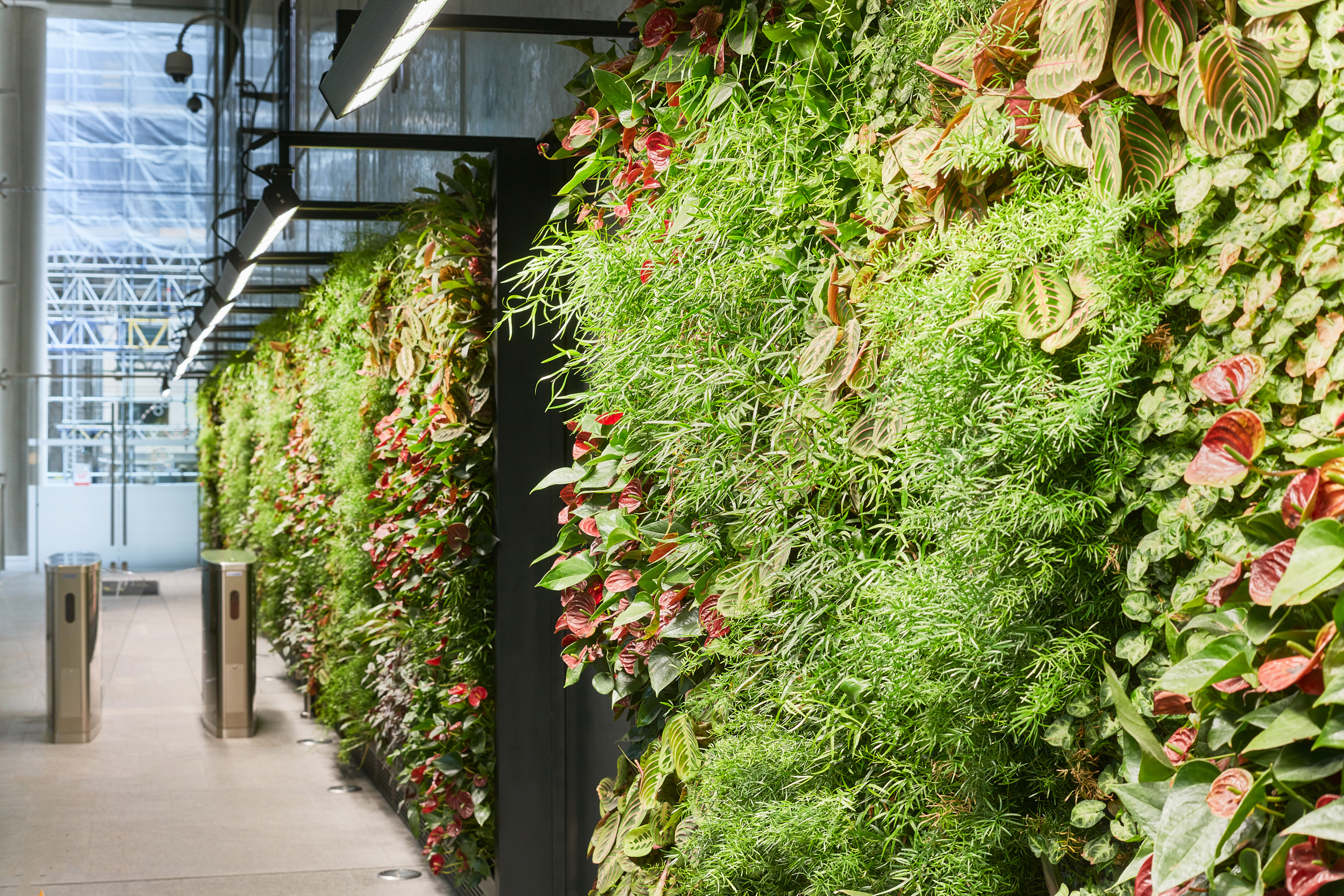Kroptek’s lighting experience make your living walls come to life. Whether in office spaces or in your own home, living walls are becoming a clear modern healthy living trend. Multiple partners have chosen Kroptek lights to make their living wall project a reality.
From art to necessity
It all started as an art form in the 1970s, where living walls were introduced as a way to add beauty and value to grey office buildings and homes. It then didn’t stop there. All research points to the following benefits: living walls help to purify the air, regulate the temperature and promote biodiversity within cities.
People are a key driver as well. Recent studies show that people are happier in a green environment. Being surrounded by plants can also help them be more productive. Last but not least, cleaner air means fewer health issues and complaints, leading to a decrease in absence due to illness.
Top lighting tips for living walls
First things first: choosing the right plants for the available light is essential. It is important to keep in mind that plants are affected by the amount of light they receive on a daily basis (something we’ve covered in this blog). Not enough light can mean leggy plants, yellow to white leaves, and a lack of flowering. Too much light can lead to scorched and bleached leaves.
You then need to keep in mind the light duration when choosing your plants. The light duration, also called photoperiod, is the number of hours of light a plant needs per 24-hour period. Plants are classified into 3 categories according to different photoperiod:
- Short Day Plants require short days to flower and cannot reflower indoors unless they are grown in short days. Chrysanthemum, Thanksgiving and Christmas cacti and poinsettia are some great options.
- Long Day Plants flower when the daylight exceeds the hours of the night period. Some examples include African violets, gloxinia and tuberous begonias.
- Day-Neutral Plants are insensitive to day length differences for flowering. Flowering maple, crossandra, and gerbera daisies are a growers’ favourites.
You can also look for low light level plants that require little to no direct light. In their native growing environments, these plants are “understory plants” meaning they grow underneath the branches of larger plants. Some examples of low light level plants: English ivy, pothos, and snake plant.
Lighting requirements may vary depending on the plants chosen for the wall, as all plants have a minimum light requirement. Take the guess work out of living walls, and get in touch with one of our horticultural and lighting specialists.

